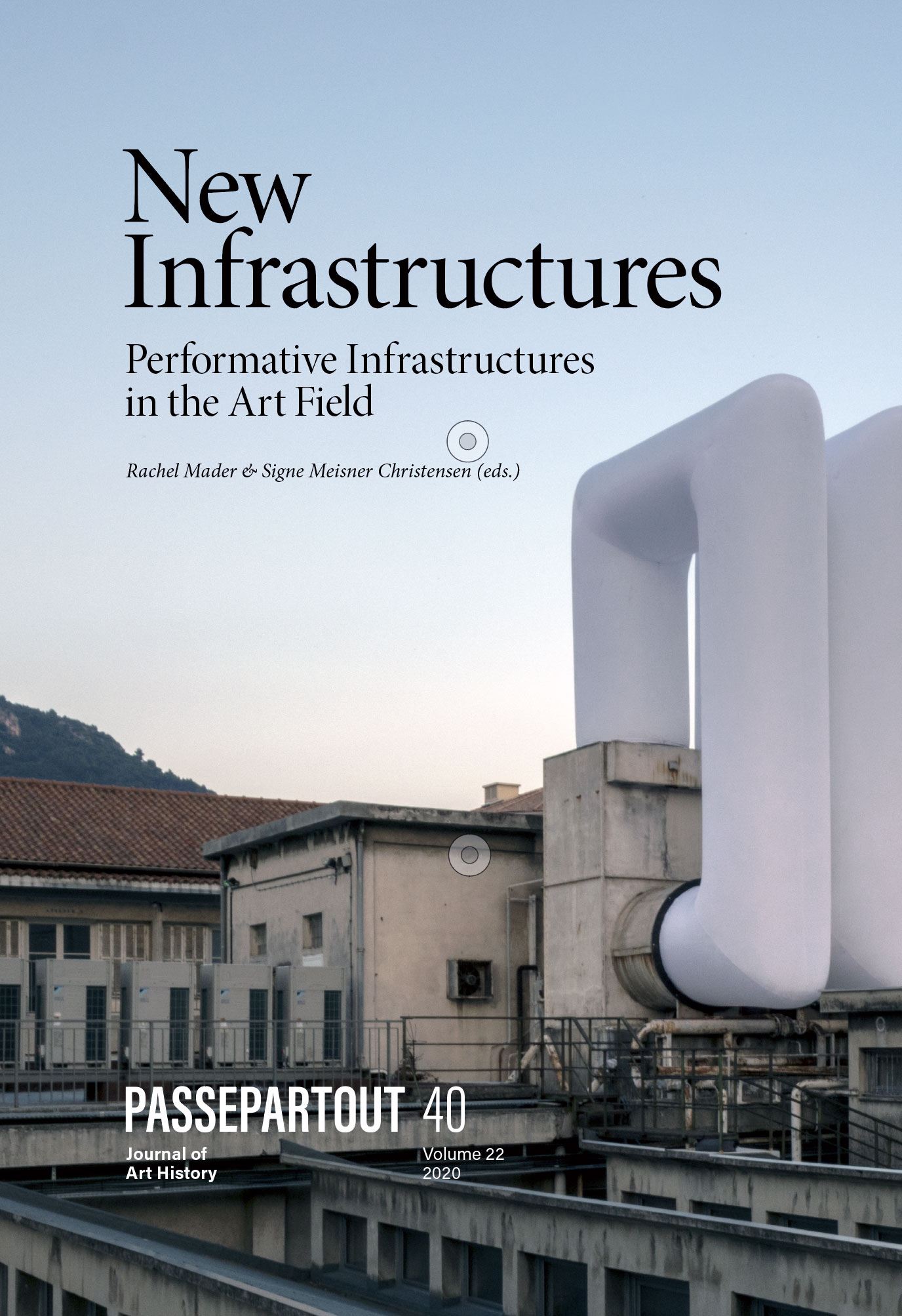Organizing in the Public Interest
Participatory Organizing and Art’s Organizational Turn
Keywords:
Participatory art, organization, art’s organizational turn, Kester, Bishop, LawAbstract
Art’s engagement with social practices has promoted reflections in art theory about strategies of organizing. Whether in the form of temporary self-organized initiatives, interventions into society or as the possibility of art developing alternative, sustainable organizations, questions of organizing come to the fore. In this article, I suggest that art theory will benefit from engaging with organizational theory, and I point to sociologist John Law’s concept of “modes of ordering” as a useful analytical tool with which to study the organizing practices involved in and affecting contemporary art. In particular, the article targets the field of participatory practices and suggests that they might be interpreted as the effect of cross-institutional modes of ordering. The potential of such an analysis is twofold. First, it offers an alternative analytical entrance point into the field of participatory practices, as opposed to the two dominant positions of a durational-dialogical and a conflictual-interventionist perspective. Second, it underlines how organizational processes cut across disciplinary fields and institutional barriers, generating networks of processual relations that support and strengthen certain practices, while challenging and impeding other practices.
References
Bishop, Claire: “Antagonism and Relational Aesthetics” in October, no. 110, 2004, pp. 51–79.
Bishop, Claire: “The social turn: Collaboration and its Discontents” in Art Forum, Feb., 2006.
Bishop, Claire: Artificial Hells: Participatory Art and the Politics of Spectatorship, London, Verso, 2012.
Bourriaud, Nicolas: Traffic, Bordeaux, capc musée d’art contemporain, 1996.
Bourriaud, Nicolas: Relational Aesthetics, Les presses du reel, 2002.
Deutsche, Rosalyn: Evictions: Art and Spatial Politics, Cambridge, MA, MIT Press, 1996.
Dockx, Nico & Gielen, Pascal (eds.): Commonism: A New Aesthetics of the Real, Amsterdam, Valiz, 2018.
Finkelpearl, Tom: What We Made: Conversations on Art and Social Coorporations, Duke University Press, 2013.
Gablik, Suzi: “Connective Aesthetics: Art after Individualism,” in Lacy (ed.), Mapping the Terrain: New Genre Public Art, Bay Press, 1995.
Holm, Ditte Vilstrup: The Poetics of Participation: the organizing of participation in contemporary art, PhD, PhD series, CBS, 2019a.
Holm, Ditte Vilstrup: “Between Freedom as Autonomy and Freedom as Potentiality: Artistic Work in a Participatory Culture”, Conjunctions, Vol. 6. Nr. 1, 2019b.
Jackson, Shannon: Social Work: Performing Art, Supporting Publics, Routledge, 2011.
Kester, Grant: Conversation Pieces: Community and Communication in Modern Art, Oakland, CA, University of California Press, 2004.
Kester, Grant: The One and the Many: Contemporary Collaborative Art in a Global Context, Durham, NC, Duke University Press, 2011.
Kester, Grant: “Another Turn: A Response to Claire Bishop,” in Art Forum, 44 (9), 2006, p. 22.
Kwon, Miwon: One Place After Another: Site-Specific Art and Locational Identity, Cambridge, MA, MIT Press, 2004.
Laclau, Ernesto & Mouffe, Chantal: Hegemony and Socialist Strategy: Towards a Radical Democratic Politics, London & New York, Verso, 2014.
Lacy, Suzanne (ed.): Mapping the Terrain: New Genre Public Art, Bay Press, 1995.
Law, John: Organizing Modernity, Oxford, Blackwell Publishers, 1994.
Law, John: “Ordering and Obduracy” published by the Centre for Science Studies, Lancaster University, Lancaster LA1 4YN, UK, 2003: http://www.lancaster.ac.uk/fass/resources/sociology-online-papers/papers/law-ordering-and-obduracy.pdf (accessed May 14, 2020).
Law, John: “Actor Network Theory and Material Semiotics,” version of April 25, 2007: http://heterogeneities.net/publications/Law2007ANTandMaterialSemiotics.pdf (accessed May 14, 2020).
Law, John: After Method: Mess in Social Science Research, Routledge, 2010.
McKee, Yates: Strike Art: Contemporary Art and the Post-Occupy Condition, London & New York, Verso, 2017.
Mouffe, Chantal: “Which Public Space for Critical Artistic Practices?” Lecture presented at the Institute of Choreography and Dance (Firkin Crane) as part of Cork Caucus, 2005: https://readingpublicimage.files.wordpress.com/2012/04/chantal_mouffe_cork_caucus.pdf (accessed May 14, 2020).
Raven, Arlene (ed.): Art in the Public Interest, New York, Da Capo Press, 1993.
Sholette, Gregory: Delirium and Resistance: Activist Art and the Crisis of Capitalism, London, Pluto Press, 2017.
Thompson, Nato (ed.): Living as Form: Socially Engaged Art From 1991–2011, New York, Creative Time Books, 2012.





